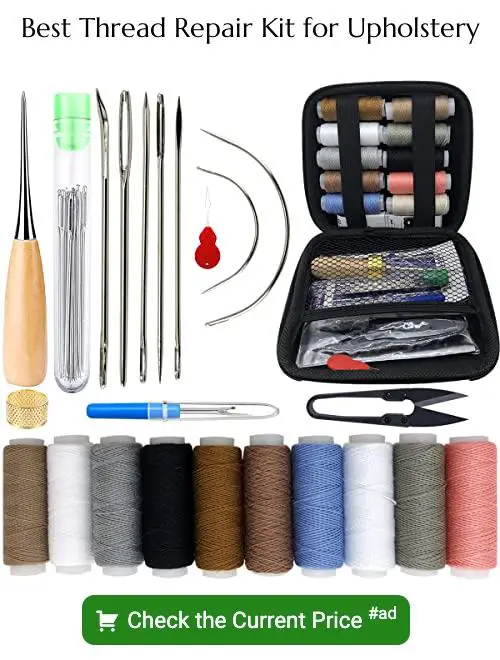Last updated on
Fixing loose threads on your couch is a manageable task because it not only prevents further damage but also restores the overall look of your favorite seating spot.
Loose threads on your couch can be an unsightly annoyance, but there’s no need to fret. This quick and easy guide will take you through the steps of fixing those pesky threads, restoring your couch to its former glory.
From identifying the type of fabric and thread to selecting the right tools and techniques, every detail is covered here to ensure a seamless repair process.
So, roll up your sleeves and let’s get that couch looking as good as new.
Key takeaways:
- Identify fabric and loose threads on couch.
- Gather materials: thread repair kit, felting needle, razor, fabric glue.
- Prepare the couch and equipment for repair.
- Fix loose threads using felting needle, razor, or needle and thread.
- Practice post-fixation aftercare and preventative measures.
Table of Contents
Identifying the Type of Fabric and Loose Threads On Your Couch

Fabric types range extensively, from linen and wool to leather and polyester, each with distinctive characteristics that affect how they fray and how they should be repaired.
By using a magnifying glass or simply going by touch, you can often determine your couch’s fabric.
A smooth and cool touch often denotes synthetic materials, while a warm, textured touch indicates natural.
Examine your couch for loose threads, both on the surface and intertwined within the fabric.
Loose threads typically appear as small fringes or loops sticking out, disrupting the uniformity of the couch.
Familiarize yourself with these patterns, as understanding the fabric and the nature of the fraying will help tailor the perfect repair strategy.
Gathering Materials for Thread Fixing
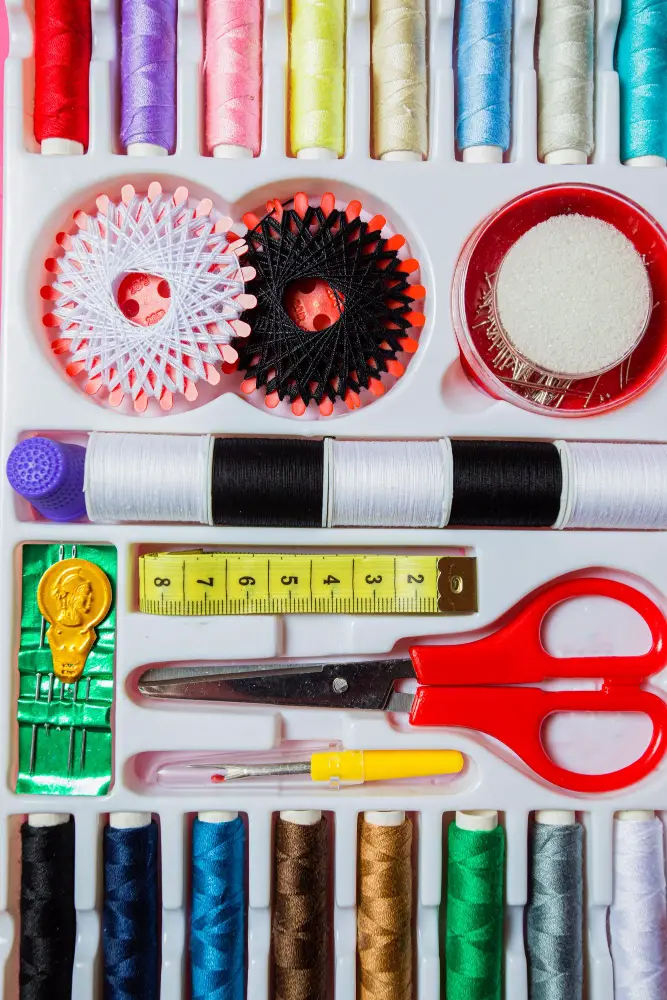
First and foremost, a thread repair kit is essential. It typically includes a seam ripper, small scissors, thread in various colors, and a variety of needles.
An upholstery felting needle can also be a wise investment if your couch has a fabric such as wool or chenille. It fuses loose threads back into the fabric, providing an almost invisible repair.
Additionally, a single-blade razor may come in handy. It’s perfect for cutting off threads that are too short to be woven back into the fabric.
Finally, having a fabric glue is advised. This can be used to secure threads that are prone to becoming loose over time. Make sure the glue is suitable for your fabric.
With these essential materials on hand, you’re ready to start the repair process. Remember, it’s all about patience, precision, and care.
Preparation Processes for Fixing Loose Threads

Ensuring the couch is clean is the first step. Rid it of dust and debris with a soft brush or vacuum cleaner, tackling gentle strokes to prevent further damage.
Find an appropriately-lit area to work, as it enhances visibility for precision. Take a close-up of the area before you begin for reference.
Identify the prominent color of loose threads. If they’re hugely different from the rest of the upholstery, discreetly trimming might save you the repair procedure.
Remember, every patch of fabric has its own thread direction, referred to as ‘nap’. Understanding its pattern is crucial for successful repair.
Lastly, also have all your equipment at arm’s length; this includes a felting needle, a razor, or a needle and thread, depending on the technique you will apply.
Thread Fixing Techniques Using a Felting Needle

The felting needle offers an efficient method to fix loose threads, especially when dealing with thick fabrics. Before starting, ensure you are wearing protective gloves as the tool can be pretty sharp.
1. Guide the Thread: Use the felting needle to begin directing the loose thread back into the fabric. Pierce the fabric around the thread to facilitate its reintegration. Do this gently to ensure the thread’s connection to the fabric still remains intact.
2. Integrate the Thread: Once the loose thread is aligned with the fabric silhouette, use the needle to carefully push it further inside. Depending on the fabric’s thickness, you may need to do this multiple times to secure it fully.
3. Smooth the Surface: Go over the treated area with the needle to create a smooth, unified appearance. The aim here is to conceal any visible signs of previously lost threads.
Remember, patience and careful handling are crucial when dealing with intricate fabric structures to avoid further damage. Always practice on a small hidden area of the couch first to perfect your technique.
Thread Fixing Techniques Using a Razor
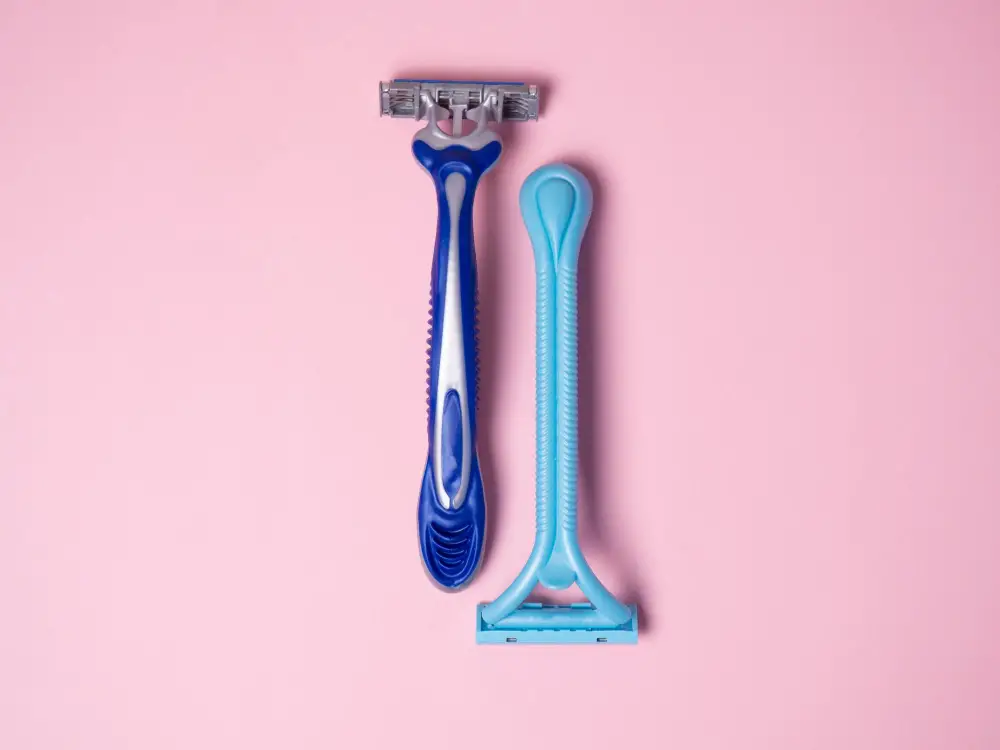
Firstly, ensure the razor is sharp and clean, as dull or dirty razors can damage the fabric further. Hold the fabric taut with one hand, this helps to avoid unintentional cuts. With a steady hand, aim to shave the loose thread carefully without touching the fabric. The goal here is precision, not speed.
Be gently cautious, the razor should simply skim the surface, severing the loose threads without hurting the underlying material. Continually assess your work, stop once you’ve achieved a smooth surface. Note, this method is ideal for sturdy fabrics like denim or tough cotton but avoid it on delicate materials like silk.
Remember, this technique requires vigilance and patience. Overzealous shaving can lead to unwanted holes or thinned fabric. You might need a few practice runs on scrap material first. Also, it is advisable not to use this method frequently as it may cause the fabric to wear out over time.
Thread Fixing Techniques Using a Needle and Thread
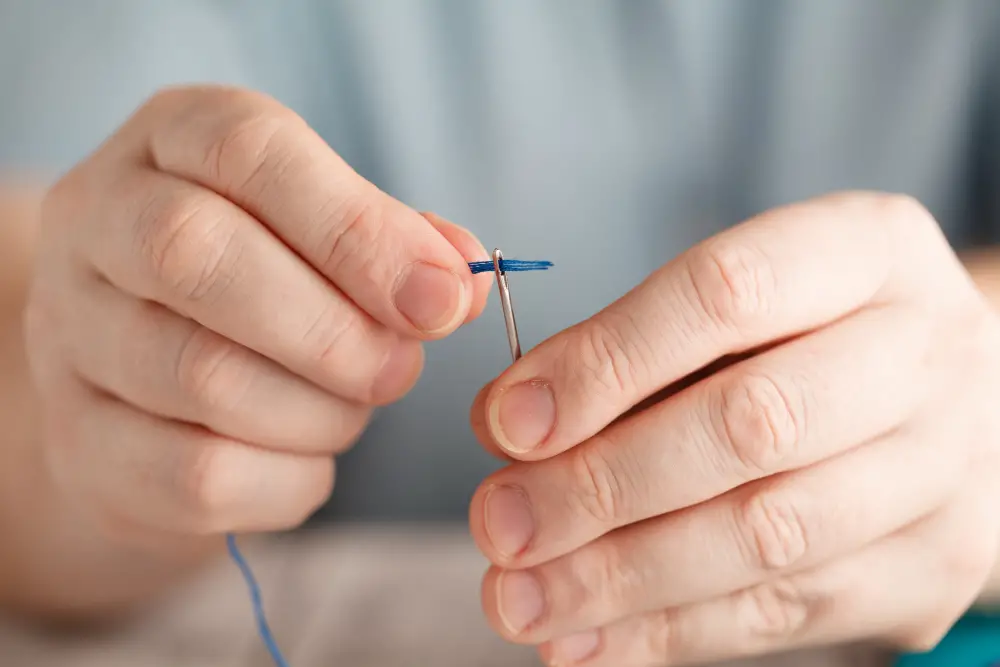
Firstly, ensure the thread color matches the rest of the upholstery, camouflage is key to seamless reparations.
Locate the thread to be repaired, then, using a single strand of sewing thread, thread your needle. Double-knot the loose end of the strand to serve as an ‘anchor’ preventing the thread from slipping through the fabric while you stitch.
Initiate your restoration by pushing the needle through the underside of the fabric so your knot remains hidden. Cautiously guide the needle around the loose thread, creating a series of loop-like stitches encompassing it. A small tug after each stitch around the circumference aids in tightening the loops, firmly binding the loose thread against the fabric.
Thread tension is crucial: too tight and the fabric puckers, too loose and you risk the thread re-fraying. Once satisfied, secure your final stitch by pushing the needle through the fabric, leaving the remaining thread on the underside. Simply trim the excess thread leaving a small tail, concealing the final knot beneath the fabric.
Post-Fixation Aftercare and Preventative Measures for Loose Threads
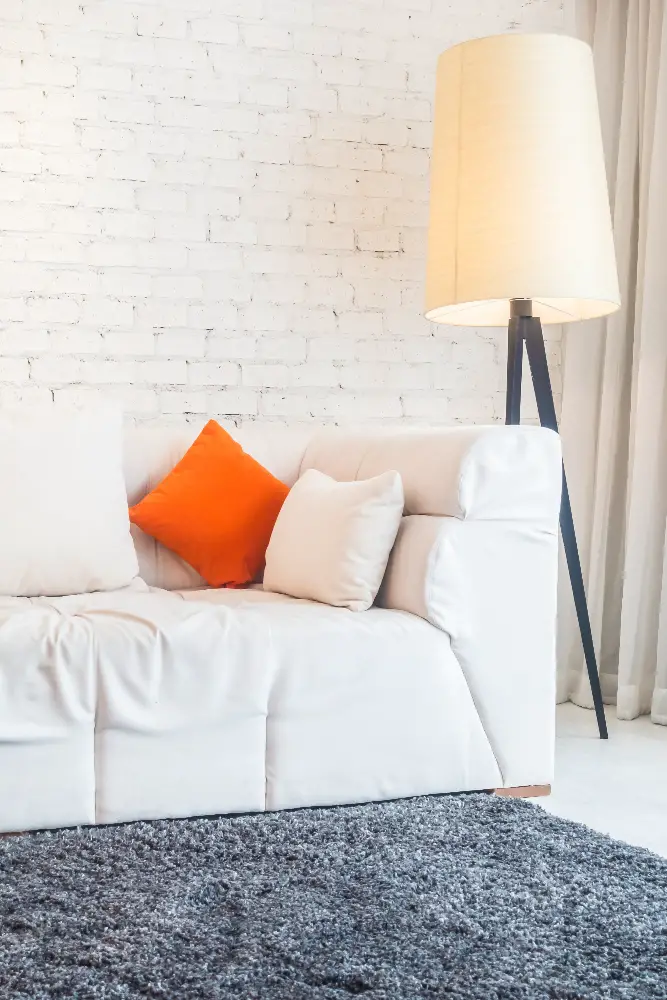
Care and maintenance shouldn’t stop after fixing those loose threads. Regular checks help prevent future thread issues; alertness is key.
Avoid hard rubbing while cleaning your couch; it encourages thread fraying. Instead, brush gently with a soft bristle brush.
Steer clear of harsh cleaning products. They weaken the fabric, triggering loose threads. Focus on fabric-friendly products. Additionally, install fabric protectors on your couch; they safeguard against wear and tear.
Remember, the sun can deteriorate fabric quality, fade colors, and loosen threads. As much as possible, protect your couch from direct sunlight. Lastly, professional couch cleaning annually is a wise investment, ensuring expert fabric and thread care.
FAQ
How do you fix loose thread on fabric?
To fix a loose thread on fabric, pull it gently to the backside of the material and weave it into the existing threads rather than cutting it, to avoid unraveling.
How do you fix upholstery snags?
Fix upholstery snags by utilizing a wooden skewer to gently push the snags and pulls into the reverse side of the fabric, maneuvering it between the fabric’s cross weaves.
What are the best tools to repair loose threads in upholstery?
For repairing loose threads in upholstery, ideal tools include a needle and thread, scissors, fabric glue, and tweezers.
How can you prevent threads from coming loose on a couch?
Preventing threads from coming loose on a couch can be achieved by using a pair of scissors to trim the loose threads close to the fabric and applying a small amount of clear nail polish or fray check to the trimmed area.
What techniques can be employed for addressing upholstery snags in antique furniture?
Upholstery snags in antique furniture can be addressed using techniques like gently pulling the snagged thread back into the fabric with a needle or using a snag repair tool, applying a dab of fabric glue to keep it in place, or professionally reupholstering the piece if multiple snags and tears are present.
